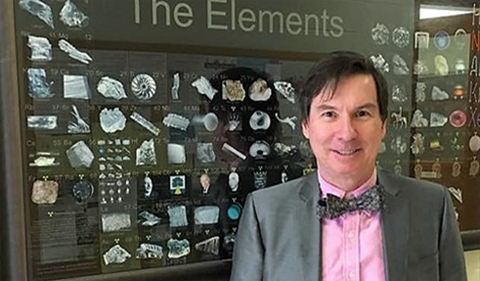
Dr. Peter de B. Harrington
Dr. Peter de B. Harrington, Professor of Chemistry & Biochemistry, delivered a keynote lecture titled “Applications of restricted Boltzmann machines to the authentication of botanical medicines” at the Advances in Pharmaceutical Analysis conference in Wuhan, China on Nov. 19.
This lecture demonstrated that the combination of deep-learning algorithms with chemometrics improves the prediction of moisture, protein, and fat concentrations by near-infrared spectral measurements of wheat and meat.
A research paper on this topic, “Feature Expansion by a Continuous Restricted Boltzmann Machine for Near-Infrared Spectrometric Calibration,” is in press at Analytica Chimica Acta.
Harrington also is listed as a renowned speaker at the International Conference Analytical Chemistry, giving a plenary on “Application of Restricted Bolzmann Machines to Analytical Chemistry.”
He also will be a keynote speaker at the 11th Winter Symposium on Chemometrics.
Abstract for “Applications of restricted Boltzmann machines to the authentication of botanical medicines”—Many advances in modern society are due to embedded artificial intelligence. Some of these innovations are voice recognition in phones and personal assistants, image recognition for identifying faces in photos, and digital transcription of handwriting. These advances rely on deep neural networks, some of which are efficiently built with layers of restricted Boltzmann machines (RBMs). RBMs have many potential applications in analytical chemistry for finding features in data, especially data expansion. Data expansion can improve classification and calibration methods by transforming the data into an expanded space where the problem can easily be solved. This approach is known as the Copiosity Principle1. RBMs may be used to transform analytical measurements and improve the performance for classification and calibration. Several novel RBMs have been devised that can perform feature expansion, classification, calibration, and multiblock modeling that is combining information from multiple analytical instruments. Two main applications in the pharmaceutical sciences are authentication and measuring the active pharmaceutical ingredient. Both applications can benefit from the use of RBMs as a data pretreatment method. Some examples, will demonstrate the improvement for identifying species of Black Cohosh (升麻) and Cannabis (大麻) and measuring antioxidant activities of Prunella species (夏枯草).
Keywords: Chemometrics, Restricted Boltzmann Machine, Authentication, and Chemical Profiling
Reference: 1 Harrington, P.B.; Hu, L. “Copiosity Principle for 21st Century Chemometricians”, Chemometrics in Analytical Chemistry, Tarragona, Spain, June 25, 1996.

















Comments